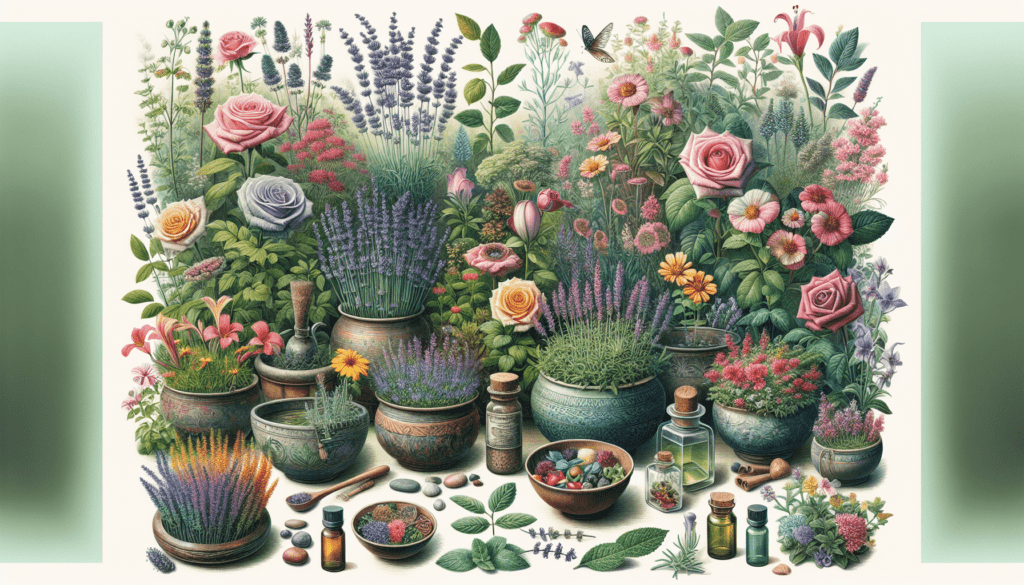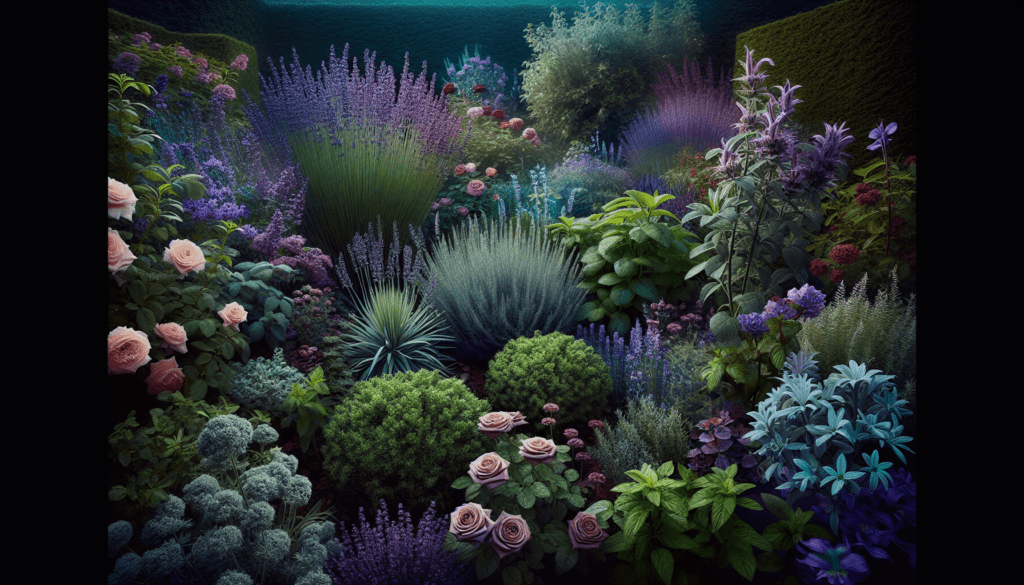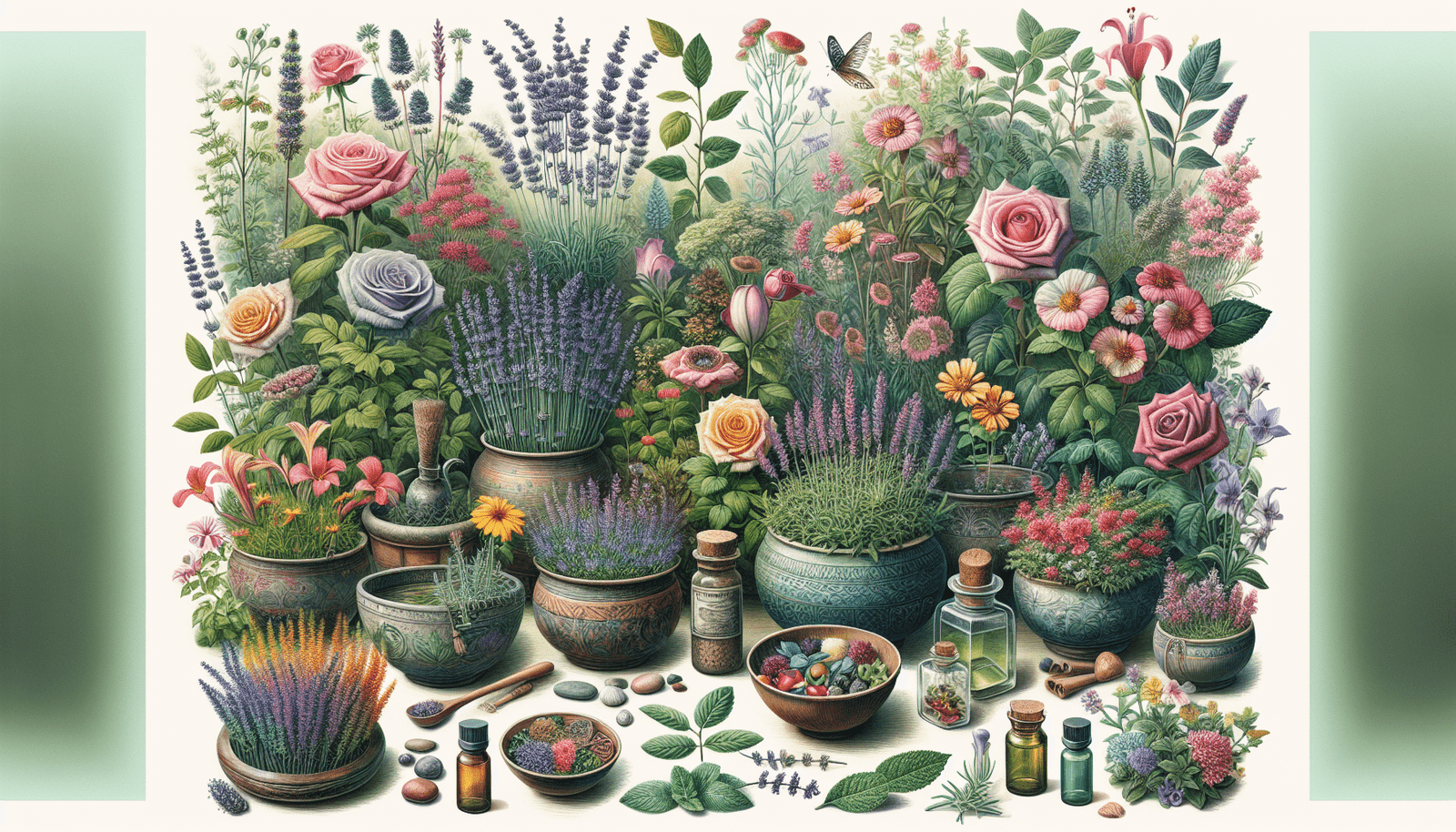Have you ever dreamed of having a peaceful and soothing garden to escape to after a long day? Imagine birds chirping, colorful flowers blooming, and the gentle rustle of leaves in the wind. If you want to create a garden that not only looks beautiful but also relaxes and calms your senses, then this article is for you. Let’s explore the best plants that will help you create a sensory oasis right in your backyard.

Choosing the Right Plants for a Soothing Garden
When it comes to creating a garden that soothes the senses, the first step is to choose the right plants. Not all plants are created equal when it comes to relaxation and tranquility. Look for plants that have calming scents, soft textures, and beautiful colors.
Lavender
Lavender is a classic choice for a sensory garden. Its fragrant purple blooms not only look beautiful but also have a calming effect on the mind and body. Plant lavender in an area where you can easily brush past it and release its soothing scent into the air.
Chamomile
Chamomile is not just for tea – it also makes a wonderful addition to a sensory garden. Its delicate white flowers and apple-like scent have been used for centuries to promote relaxation and sleep. Plant chamomile in a sunny spot where you can enjoy its fragrance up close.
Jasmine
Jasmine is a climbing plant with sweetly scented white flowers that bloom at night. Its intoxicating fragrance is known for its stress-relieving properties and can help you unwind after a hectic day. Plant jasmine near a seating area where you can enjoy its scent in the evenings.
Creating a Color Palette for Relaxation
Choosing the right colors for your garden can also play a significant role in creating a soothing environment. Soft and muted colors like pastel blues, greens, and purples can evoke a sense of calm and relaxation.
Blue
Blue is often associated with serenity and tranquility, making it an ideal color for a sensory garden. Plant blue flowering plants like hydrangeas, delphiniums, and forget-me-nots to create a calming atmosphere.
Green
Green is the color of nature and symbolizes growth, harmony, and freshness. Incorporate plenty of green foliage plants like ferns, hostas, and peace lilies to create a sense of balance and calm in your garden.
Purple
Purple is a color often associated with luxury, spirituality, and creativity. Plant purple flowers like lavender, wisteria, and catmint to add a touch of elegance and tranquility to your sensory garden.
Texture and Touch
Incorporating plants with a variety of textures can add a tactile element to your garden and enhance the sensory experience. Mix plants with soft, fuzzy leaves, smooth petals, and coarse bark to create a diverse and inviting space.
Lamb’s Ear
Lamb’s ear is a perennial plant with soft, velvety leaves that are a delight to touch. Its silvery foliage adds texture and interest to the garden and is especially soothing to run your fingers through.
Hens and Chicks
Hens and chicks are succulent plants with fleshy, plump leaves that form rosettes. Their unique texture and shape make them a fun addition to a sensory garden and add a touch of whimsy.
Japanese Maple
Japanese maple trees have delicate, lacy leaves that create a beautiful contrast with their smooth bark. Plant a Japanese maple as a focal point in your garden to add visual interest and tactile appeal.
Sound and Movement
In a sensory garden, it’s not just about what you see and touch – sound and movement also play a crucial role in creating a soothing environment. Plants that rustle in the wind, attract birds with their songs, or create a gentle rustling sound can add another layer of sensory stimulation.
Ornamental Grasses
Ornamental grasses like pampas grass, fountain grass, and switchgrass add movement and sound to the garden with their swaying plumes. Plant ornamental grasses in clusters to create a rustling, whispering effect in the breeze.
Wind Chimes
Hang wind chimes from branches or pergolas to add a musical element to your garden. The gentle tinkling sound of wind chimes can create a relaxing ambiance and drown out background noise.
Water Features
Water features like fountains, ponds, or birdbaths not only add visual interest to the garden but also create a soothing sound. The sound of running water can mask unwanted noise and create a calming atmosphere in your outdoor space.

The Importance of Fragrance
Plants with fragrant flowers or foliage can add a delightful scent to your garden and evoke memories and emotions. Choose plants with sweet, spicy, or herbal scents to create a multi-sensory experience that will uplift and relax your senses.
Rosemary
Rosemary is an aromatic herb with needle-like leaves and a woody fragrance. Its scent is said to improve memory, concentration, and mood, making it an excellent choice for a sensory garden.
Honeysuckle
Honeysuckle is a climbing vine with fragrant flowers that attract bees and hummingbirds. Its sweet, floral scent is particularly strong in the evenings and can fill your garden with a heady perfume.
Lilac
Lilacs are deciduous shrubs with clusters of fragrant flowers in shades of purple, pink, and white. Their sweet, nostalgic scent is a sure sign of spring and can transport you back to childhood memories of playing outdoors.
Designing a Sensory Garden
Now that you know which plants to choose, it’s time to design your sensory garden. A well-designed garden should engage all five senses – sight, touch, smell, sound, and taste. Here are some tips for creating a sensory oasis in your backyard.
Plan for Year-Round Interest
Include a mix of plants that bloom at different times of the year to ensure your garden is always alive with color and fragrance. Choose plants with evergreen foliage, berries, or interesting bark to provide visual interest during the winter months.
Create Quiet Spaces
Designate quiet corners or seating areas where you can relax and unwind in your garden. Add a bench, hammock, or cozy chair surrounded by fragrant plants and soothing sounds to create a peaceful retreat.
Incorporate Lighting
Extend the enjoyment of your sensory garden into the evening hours by incorporating lighting. Use string lights, lanterns, or solar-powered stake lights to create a magical atmosphere and highlight your favorite plants.
Maintaining Your Sensory Garden
Once your sensory garden is in place, it’s essential to maintain it regularly to ensure it continues to soothe your senses for years to come. Water, prune, and fertilize your plants as needed, and take time to sit and enjoy the fruits of your labor.
Watering
Most plants in a sensory garden will require regular watering, especially during hot and dry periods. Check the soil moisture regularly and water deeply to encourage deep root growth and healthy plants.
Pruning
Prune your plants as needed to promote healthy growth and maintain their shape. Remove dead or damaged branches, spent flowers, and overcrowded growth to keep your garden looking neat and tidy.
Fertilizing
Feed your plants with a balanced fertilizer to provide essential nutrients for growth and flowering. Use a slow-release fertilizer once or twice a year, following the instructions on the packaging for best results.
Conclusion
Creating a garden that soothes the senses is a rewarding and enjoyable experience that can provide a peaceful retreat right at your doorstep. By choosing the right plants, colors, textures, and scents, you can design a sensory oasis that engages all five senses and promotes relaxation and well-being. Whether you have a small balcony or a sprawling backyard, there are endless possibilities for creating a sensory garden that will bring you joy and tranquility for years to come. Happy gardening!

